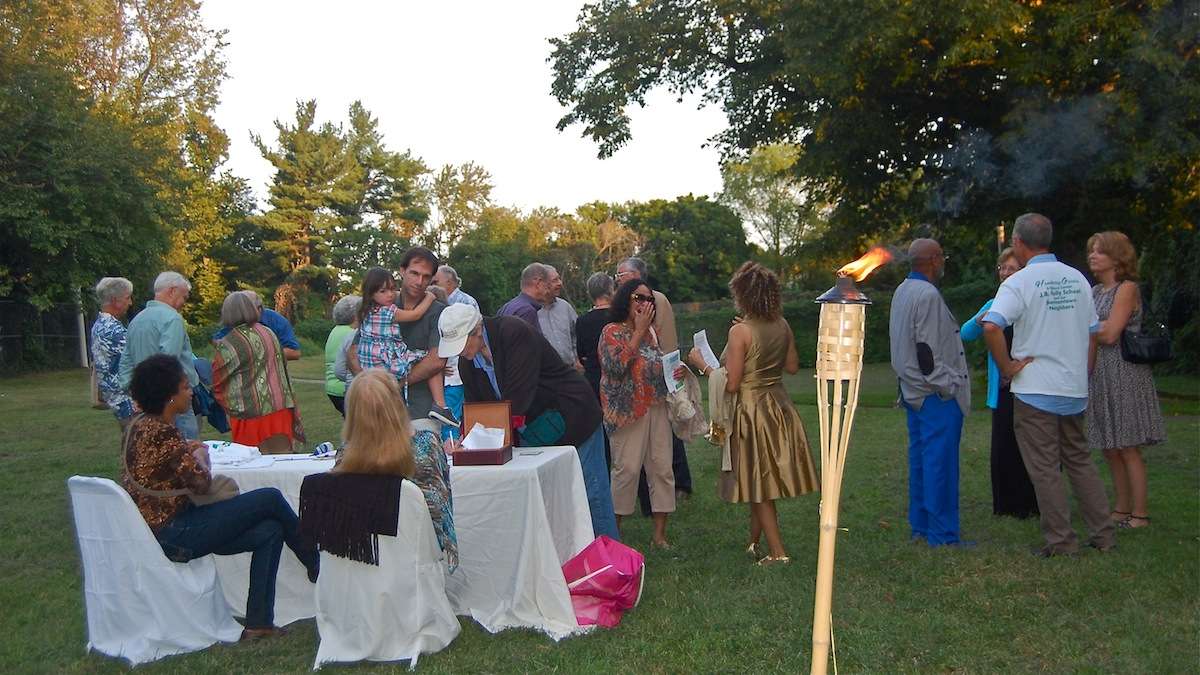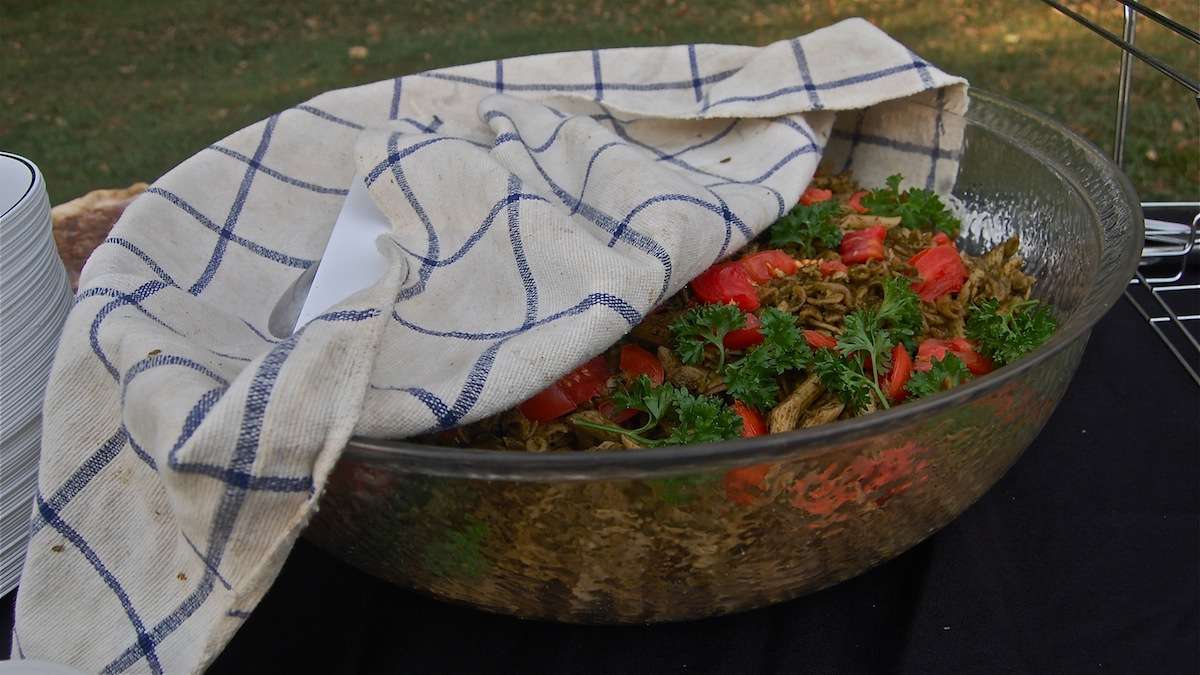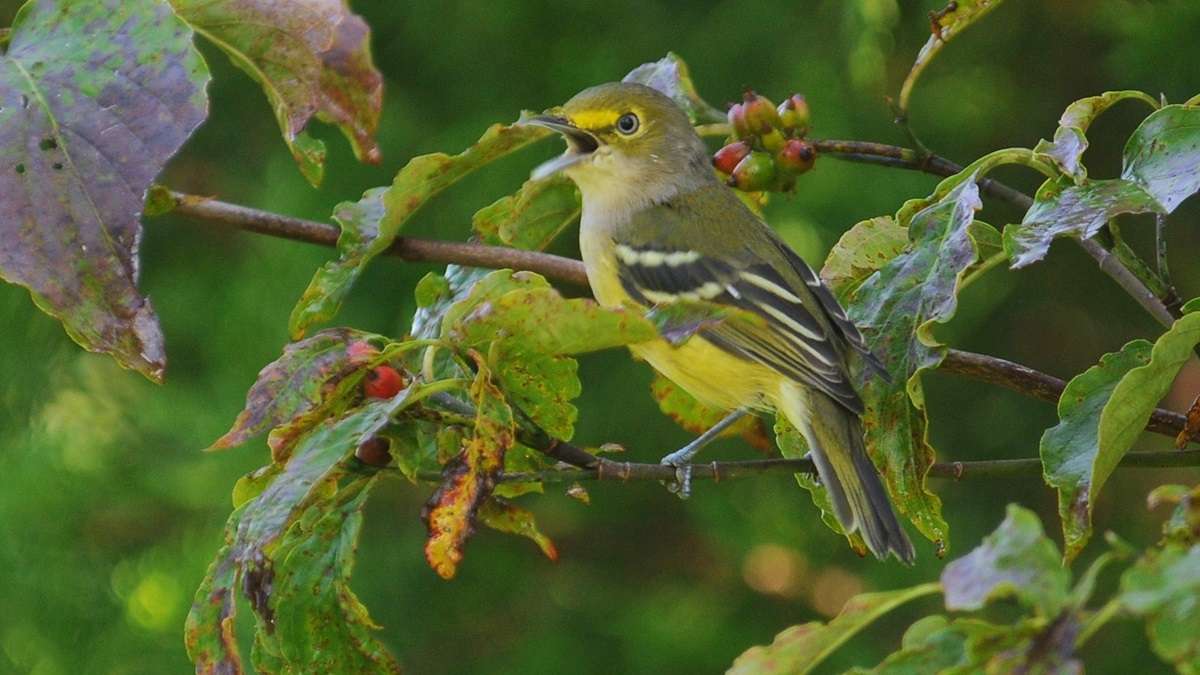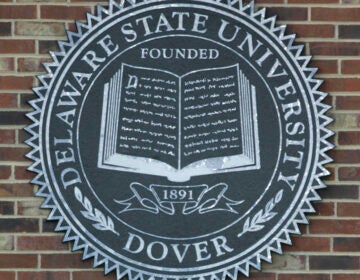Falls gives new meaning to bird sightings in Delaware
If a species of bird lived in the rich avian environment of the Brandywine Valley over the past 15 years, chances are it was stalked and photographed by Derek Stoner.
Stoner has listened and recorded all of its tweets, coos and whistles heard in the area.
And this time of the year is one of Stoner’s favorites. Daylight is growing shorter and there is a chill in the air, so birds are packing their bags for warmer climates. Swarms of warblers, vireos, thrushes, orioles, tanagers, and other neo-tropical songbirds come streaming out of northern boreal forests and will soon be filling the skies to pass through the Delaware Valley on their mind-boggling journey to Central and South America, where they will spend the winter.
“These birds visit the Delaware Valley, a classic ‘stopover’ habitat that has the necessary requirements for these long-distance travelers: food, shelter, and space,” Stoner said. “Visit the right rest stop for birds during fall migration and you will witness a spectacle of colorful songbirds zipping around as they fuel up for their major migration to the southern hemisphere.”
Fall birds often travel in larger, more impressive flocks than spring migration and include both adult and juvenile birds. Some species of birds can fly several thousand miles on their migration as far south as Argentina grasslands, journeying through the night to avoid predators at speeds of 40 miles an hour. Once they take flight, the birds take whatever help they can get. A variety of songbirds time their departure with the onset of stormy weather so they can take advantage of tailwinds.
The routes birds follow between their nesting grounds and their wintering areas are as varied as the birds themselves. The overwhelming majority of bird species travel on a broad front in “flyways” that may be as wide as the continent. Migrating birds probably cross every square mile of land and water in North America.
Among the neo-tropical songbirds that are migrating in early autumn are the eastern kingbird, red-eyed vireo, tree swallow, barn swallow, blue-gray gnatcatcher, wood thrush, orchard oriole, Baltimore oriole, bobolink, and warblers such as American redstart, magnolia warbler, black-throated green warbler, Tennessee warbler, and northern parula.
Middle Run Valley
A native of Lancaster, Pa., Stoner is the Conservation Project Coordinator for the Delaware Nature Society and manages the Middle Run Natural Area in Newark.
“On a visit to a migration hotspot like Middle Run, or especially Cape May, you will find there are plenty of birds for eager observers to watch,”said Stoner, 36. “Fall is about a bounty of birds — four times as many as Spring– and the spectacle of long-distance migration.”
Middle Run is an 860-acre park owned by New Castle County that Stoner has managed for the past ten years. The Middle Run Birding Trail is his creation that showcases the habitat management by combining conservation, education, and recreation opportunities for park visitors. Middle Run provides a rich and diverse habitat. Skipping from treetop to treetop the birds can be spotted in the woodlands, wetlands and meadows.
“The natural areas here offer a tremendous refuge for the birds,” noted Stoner, 36, an avid outdoorsman and master bird photographer. “This is a birder’s paradise in the spring and the fall. It just takes a little looking, and a little patience.”
Dubbed the “Birdman of the Brandywine Valley,” Stoner’s field work means being out in all types of weather since there are limited times during a season to observe a particular species. It’s not so easy to pin names on the birds winging from canopy to canopy. So the birder’s prize piece of equipment and principal tool of the trade is a pair of binoculars.
“Binoculars not only visually bring folks closer to their avian friends, but enable birders to see more of the vivid colors than with the naked eye, thus appreciating the subtle beauty of feather patterns,” said Stoner, a resident of Hockessin. “It gives you a rare, invaluable glimpse into the private lives of birds.”
Identifying Birds
Stoner has led more than 400 walks (averaging 1o people) in his career that dates back to 2000. He likens the process of avian identification as the birder playing the role of chef who follows a recipe to bake a cake. A specific list of “ingredients” includes the bird’s shape, size, structure, color pattern, behavior, and habitat. All those ingredients make up the final product– the type of bird– so that humans can assign a name to its definitive species.
Soaring interest in bird-watching at Middle Run mirrors a national trend. Today, About 85 million Americans enjoy observing, photographing or feeding wild birds. About 18 million are serious enough to take trips exclusively to commune with other birders or count birds by sight or sound, according to the U.S. Fish and Wildlife Service’s 2011 National Survey of Fishing, Hunting and Wildlife-Associated Recreation.
When September is beginning to flirt with October, the mass avian exodus will be at full tilt. Birds cover thousands of miles on their annual migration, often traveling the same course year after year with little deviation in the path followed. Periodically the flocks must stop to rest, feed, or wait for acceptable weather to continue their flight. Immature birds may migrate unescorted to a winter home they have never before seen and return the following spring to the area in which they were born.
Navigational Skills
The secrets of their amazing navigational skills remain largely hidden, but most experts point to navigation by the stars and sensitivity to the earth’s magnetic field. Most of these birds are nocturnal migrants (an average speed of 25-30 mph) that take advantage of cooler night-time temperatures, steadier north winds, and lack of predators by flying under the cover of darkness. Notable diurnal songbird migrants, the tree swallow, barn swallow, ruby-throated hummingbird can fly 100 to 200 miles a night.
It’s the male birds that sing since they usually take the lead in defending territories and attracting mates. There are calls used when a bird is agitated or to warn of danger. Research shows that a chickadee can actually communicate the size and type of predator to other species.
The Middle Run Valley is a major travel corridor for birds, especially during spring and fall migration. Raptors and waterfowl navigate through the valley while following the creek. The meadow surrounding this location is a fantastic place to study butterflies in the summer, as the native wildflowers attract more than 30 species of colorful Lepidoptera. Dragon flies are also abundant in late summer, and are readily photographed perching on the tall grass stems.
To celebrate a noteworthy migratory spectacle, the Delmarva Ornithological Society will be hosting a variety of field trips and activities at northern Delaware birding hotspots. You can discover the wide variety of birds to be found in mid-to-late September, from warblers to swallows to shorebirds. Participants explore our state wildlife areas, practice using binoculars, and create a notebook to keep track of sightings and the migration destinations of these birds. In October it’s raptors on the move, focusing on hawks, eagles, falcons and many other creatures on their fall migration at one of Delaware’s Hawk Watch sites: Ashland Nature Center or Cape Henlopen. Waterfowl migration peaks during this time as well.
Stoner’s favorite fall songbird migrants are the black-throated blue warbler, ruby-throated hummingbird and the Baltimore oriole. He offers plenty of tips and techniques for locating and identifying birds (see fall migration link.)
“At this time of the year with the earth cooling, the winds from the north act as an ideal conveyor to carry these birds,” Stoner explained. “They wait until the timing is right. It’s completely instinctual. The birds have a very strong sense of direction that takes them where they want to end up.”
——-
Terry Conway writes about arts and culture throughout Delaware and the Brandywine Valley. You can read his work at www.terryconway.net You can email him at tconway@terryconway.net
WHYY is your source for fact-based, in-depth journalism and information. As a nonprofit organization, we rely on financial support from readers like you. Please give today.


















